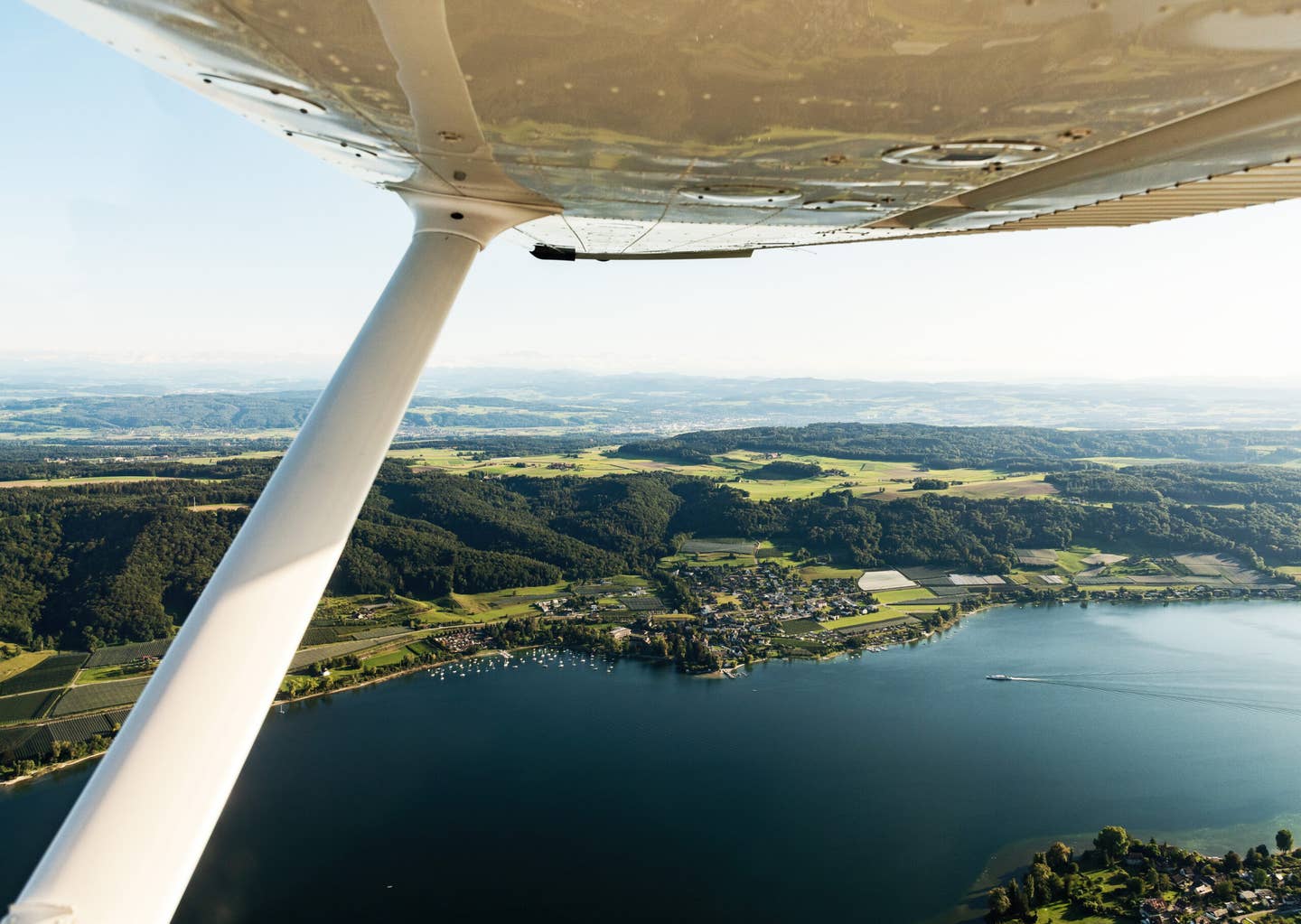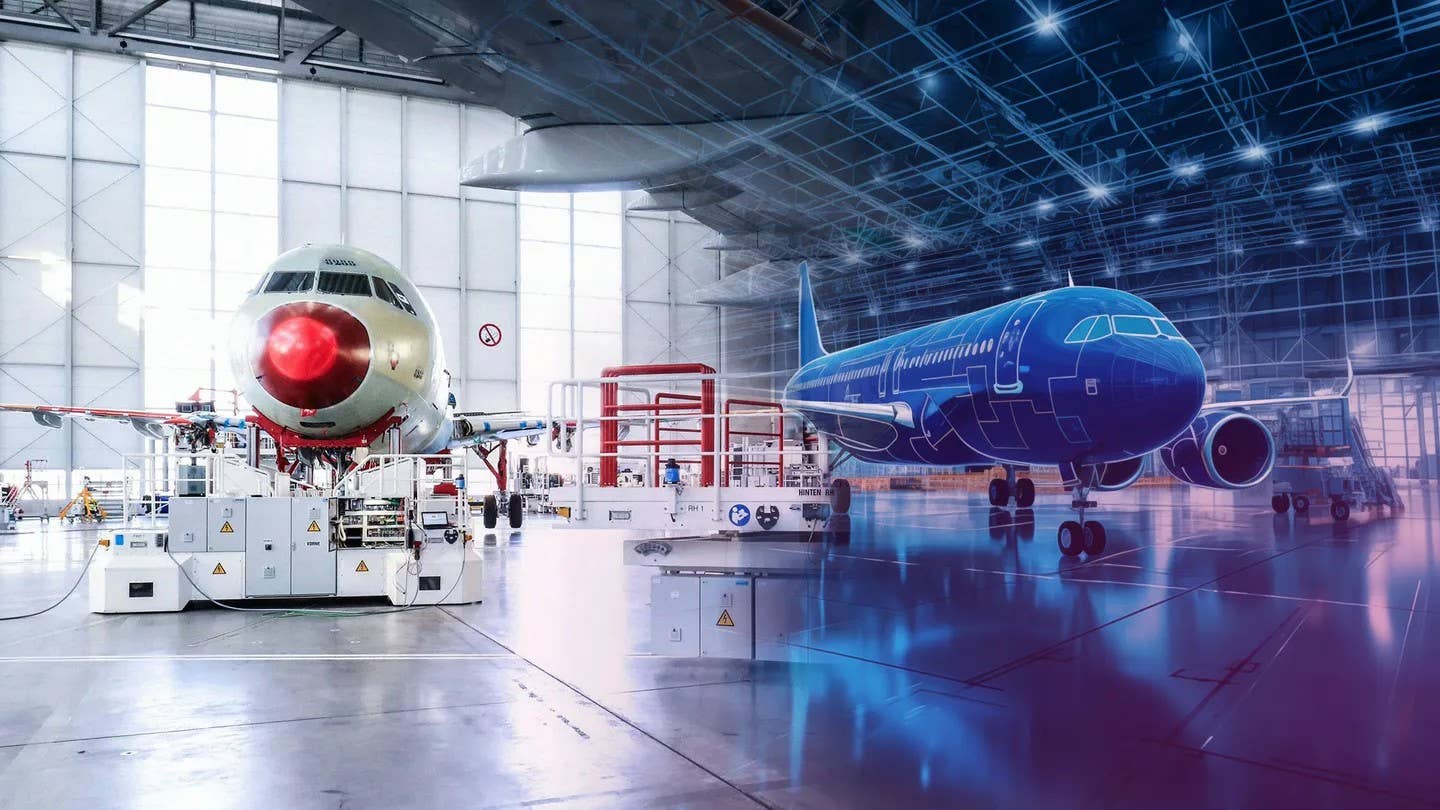
On January 9, 2006, a Cirrus SR20 crashed at Lancaster, California, during a training flight. The airplane had apparently stalled during an attempt to turn back to the runway after a simulated power loss. The helicopter-rated private pilot and his instructor both died on impact.
The Cirrus had arrived half an hour earlier from Van Nuys, 30 miles south, and had made several touch-and-go landings on Runway 6. The wind was 060 at 10 knots, gusting to 17. Either the pilot or the instructor -- the National Transportation Safety Board's report is ambiguous -- then asked the tower for permission to do a low approach and simulate an engine failure during climb-out. This was to be followed by a teardrop turn and a landing on Runway 24. There was no other traffic, and the tower approved the maneuver after calling the pilots' attention to the gusty wind. The student (or the instructor -- there is actually no way to know who was handling the controls) executed the turn successfully, though with the loss of "a significant amount of altitude," according to the tower controller.
The pilot then requested permission to repeat the maneuver, which the tower granted. The execution was similar the second time, with a slight turn to the right at the departure end of the runway, followed by a "sweeping" turn to the left. The tower controller did not see the Cirrus depart from controlled flight and hit the ground.
The turnback after power loss is not a training requirement. In fact, as far as the FAA is concerned it is not even a valid maneuver. As every pilot who has been to ground school knows, the standard advice regarding total power loss during the initial climb is to crash straight ahead. Why? Because experience has shown, on countless occasions, that an airplane attempting to return to the runway after such a power loss is very likely to stall and spin, just as this Cirrus did.
The inflexible and draconian nature of this advice has given rise to a lot of debate. Mostly it is the failed turnbacks that get reported, so how do we know what the odds of successfully completing one really are? Obviously, there must be some altitude at which a turnback is possible. What is it? And what is the best way to make the turn?
Conscientious instructors take an interest in questions like this. For what it's worth, a consensus of sorts has arisen to the effect that the turn will consume about 800 feet of altitude, and that the angle of bank for the least loss of altitude (this can be demonstrated mathematically as well as practically) is 45 degrees. If there's a crosswind, you should turn into it so as not to get carried farther away from the runway. And so on.
There are plenty of unanswered questions. What about flaps? Full flaps would reduce the radius of the turn and add stall protection, but increase the glide angle. How does the strength of the wind down the runway affect the chances of success? Because different airplanes perform differently, pilots are advised to try out the turnback maneuver at altitude -- meaning, I would think, at least 3,000 feet above the ground -- to see what it feels like and how much altitude they lose. Of course, it's going to feel different at low altitude, and different wind conditions may have unforeseen effects. One requirement is to keep the nose down, and that's a good deal harder to do at 200 feet than at 2,000.
As for the Lancaster accident, the NTSB framed the probable cause this way:
"The student pilot's failure to maintain an adequate airspeed while maneuvering, and, the flight instructor's inadequate supervision of the flight. A factor in the accident was the strong tailwind encountered as the airplane turned from an upwind to a downwind during the teardrop maneuver."
The reference to the wind betrays a misunderstanding of the effects of wind in turns. A steady wind has no effect on a turn, as is evident when we maneuver at altitude and cannot notice any influence of the wind, whatever its velocity. What can affect an airplane is not the wind itself, but any rapid change in the wind. Such a change can come from gusts or from a change of altitude.
At low level, there is almost always a wind speed gradient. The wind velocity at the surface is normally less than that higher up. Sometimes the change of wind speed with altitude is abrupt -- a horizontal wind shear. In the case of a turnback this wind gradient produces a decreasing tailwind, which is beneficial. It is equivalent to a little free airspeed, which is in turn equivalent to a little extra height.
If a steady wind has no effect on a turn, and the wind gradient in this case is favorable, what potential sources of mischief remain in the wind? Two: gusts and visual illusions.
As far as the illusions are concerned, they are familiar to any pilot who has turned at low altitude in a strong wind. With the wind abeam, the airplane appears to be sliding sideways, and there is a temptation to straighten it out with rudder. When the wind is behind, the airplane appears to be accelerating, and there is a temptation to raise the nose. At low airspeed, this combination of unconscious adjustments could produce a crossed-controls stall. A turn in a strong wind at low altitude is, in fact, a maneuver that requires special attention to the instruments.
Now, what about gusts? They are a tricky subject, and much misunderstood. Remember that it is angle of attack, not airspeed, that produces the stall. An airplane that is suddenly struck from the rear by a gust does not stall just because it has lost some indicated airspeed. It stalls later, because the airplane starts to drop (having lost some lift) and the pilot does not let the nose drop with it. The only gusts capable of triggering an immediate stall are vertical ones; and these are not likely to be encountered close to the ground.
The pilot of the Cirrus and his instructor had successfully executed one teardrop turn; they failed on the second. Why? For one reason, more than any other: This is a difficult maneuver involving a steep turn at low airspeed, and it provides very little margin for error. The "significant loss of altitude" noted by the tower controller during the first turnback is the likely result of dropping the nose to avoid G buildup during the steeply banked turn. A little too much G, and the airplane will stall whether or not a gusty wind is blowing.
The NTSB's report on the accident notes that the Cirrus Pilot's Handbook provides no guidance for turnbacks. Neither do most other handbooks; nobody wants to go that far out on a limb. (The Glasair III handbook, alone among a little stack of miscellaneous POH's that I have, admits that it might under some circumstances be possible to turn back and make the runway.) The NTSB did, however, cite a February 2004 presentation on the subject by a member of the Cirrus Owners and Pilots Association. A successful turnback, the speaker stated, required, prior to the engine failure, a steep climb close to the airport; afterwards, an immediate 45-degree turn into the crosswind while maintaining 80 to 90 knots with no flaps; and then a best-angle glide. One supplemental piece of advice, handy for Cirrus pilots but not for most others, suggested that even this speaker had limited confidence in the maneuver: If less than 500 feet agl remain and the runway is not assured, use the parachute instead.
This article is based on the National Transportation Safety Board's report of the accident and is intended to bring the issues raised to the attention of our readers. It is not intended to judge or to reach any definitive conclusions about the ability or capacity of any person, living or dead, or any aircraft or accessory.

Sign-up for newsletters & special offers!
Get the latest FLYING stories & special offers delivered directly to your inbox






